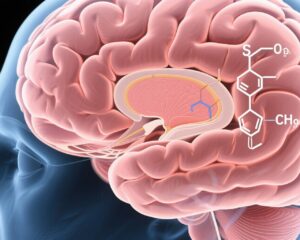Highlight
- Micronutrient supplementation leads to significant shifts in gut microbial diversity in children with ADHD.
- Decreased abundance of phylum Actinobacteriota observed after micronutrient treatment compared to placebo.
- Increased levels of butyrate-producing bacterial families Rikenellaceae and Oscillospiraceae correlate with clinical response.
- Gut microbiota modulation may represent a mechanistic link between micronutrients and behavioral improvements in ADHD.
Study Background and Disease Burden
Attention-deficit/hyperactivity disorder (ADHD) is a common neurodevelopmental disorder characterized by symptoms of inattention, hyperactivity, and impulsivity, often accompanied by emotional dysregulation. Affecting approximately 5–7% of children worldwide, ADHD imposes significant challenges on academic performance, social integration, and quality of life. Current pharmacologic interventions, primarily stimulant medications, are effective for many but not all patients and may cause adverse effects that limit tolerability. Thus, there is a critical unmet need for alternative or adjunctive therapies with favorable safety profiles.
Emerging evidence implicates the gut microbiome—a complex ecosystem of intestinal microorganisms—in neurodevelopment and behavior through the gut-brain axis. Dysbiosis, or microbial imbalance, has been reported in ADHD, suggesting a potential therapeutic target. Micronutrients (vitamins and minerals) have shown promise in improving inattention and emotional regulation, potentially via modulation of the gut microbiota. The MADDY (Micronutrients for ADHD in Youth) study explores this novel therapeutic avenue by assessing how micronutrient supplementation affects fecal microbial composition and diversity in children with ADHD.
Study Design
This investigation is a nested sub-study of the larger MADDY trial, a double-blind, randomized controlled trial evaluating micronutrient supplementation in children diagnosed with ADHD. Forty-four participants were included in this microbiome analysis. Participants were randomized to receive either a daily micronutrient formula or placebo for an initial 8-week blinded phase, followed by an 8-week open-label extension where all participants received the micronutrient supplement.
Stool samples were collected at baseline, 8 weeks, and 16 weeks. Microbial DNA was extracted and sequenced via 16S rRNA amplicon targeting the V4 hypervariable region, enabling detailed taxonomic evaluation of bacterial communities. The primary analyses compared changes in fecal microbial composition and diversity metrics between those receiving micronutrients versus placebo and between clinical responders and non-responders, determined by blinded clinician-rated global improvement scores.
Key Findings
Micronutrient supplementation was associated with significant alterations in the gut microbiome composition and diversity. Notably, alpha diversity, specifically microbial evenness, increased, indicating a more balanced microbiota ecosystem post-treatment. Beta diversity analyses, assessed by Bray-Curtis dissimilarity, demonstrated distinct microbial community shifts in the micronutrient group compared to placebo, reinforcing the impact of supplementation on gut bacteria structure.
At the taxonomic level, the phylum Actinobacteriota significantly decreased in participants taking micronutrients relative to those on placebo. While the clinical implications of this decrease warrant further elucidation, alterations in this phylum have been linked to neurodevelopmental disorders in previous studies.
The study’s most striking microbial correlates of clinical response were the significant increases in two butyrate-producing bacterial families: Rikenellaceae and Oscillospiraceae. Butyrate is a short-chain fatty acid known for its anti-inflammatory properties and role in maintaining intestinal barrier integrity, both critical for gut-brain communication. The elevated presence of these bacteria in responders suggests a mechanistic relationship whereby micronutrients may enhance behavioral outcomes by fostering a neuroprotective microbial environment.
From a safety perspective, no adverse events related to microbiome changes were reported, and micronutrient supplementation was well tolerated.
Expert Commentary
The MADDY substudy provides compelling evidence that micronutrient supplementation modulates the gut microbiome in children with ADHD, accompanied by clinical improvement in symptoms. The observed increase in butyrate-producing bacteria aligns with the growing recognition of butyrate as a key mediator of gut-brain axis communication. This supports the biological plausibility that dietary micronutrients influence neurobehavioral health via microbiome alterations.
Limitations include the relatively small sample size, short duration, and focus on fecal microbiota without functional metagenomics or metabolomics to confirm butyrate production directly. The heterogeneity in ADHD etiology and variability in diet or lifestyle factors that affect the microbiome should be controlled in future trials. Inclusion of functional readouts and larger cohorts would bolster causal inferences.
In clinical practice, these findings underscore the potential for microbiome-targeted interventions in ADHD management, highlighting the need for personalized approaches that integrate nutritional therapies. Guidelines have yet to incorporate microbiome assessments as biomarkers for treatment response but emerging data such as this may catalyze such advancements.
Conclusion
The MADDY study’s microbiome sub-analysis delineates how micronutrient supplementation beneficially modulates gut microbial diversity and composition in children with ADHD. Increased abundance of butyrate-producing bacterial families may underlie the therapeutic mechanism linking micronutrients to improved attention and emotional regulation. This research opens new avenues in ADHD treatment, advocating for integrative strategies leveraging gut microbiota modulation. Further large-scale, longitudinal studies are necessary to validate these findings and translate them into clinical guidelines.
References
Ast HK, Hammer M, Zhang S, Bruton A, Hatsu IE, Leung B, McClure R, Srikanth P, Farris Y, Norby-Adams L, Robinette LM, Arnold LE, Swann JR, Zhu J, Karstens L, Johnstone JM. Gut microbiome changes with micronutrient supplementation in children with attention-deficit/hyperactivity disorder: the MADDY study. Gut Microbes. 2025 Dec;17(1):2463570. doi: 10.1080/19490976.2025.2463570. Epub 2025 Feb 18. PMID: 39963956; PMCID: PMC11845018.
Additional references for context:
– Aarts E, et al. Gut microbiome in ADHD and its role in neurodevelopment: A review. Neurosci Biobehav Rev. 2021.
– Rubi C, et al. Butyrate-producing bacteria and ADHD: Emerging evidence on the gut-brain axis. Clin Psychopharmacol Neurosci. 2024.



